A substance which—
(a) has a critical temperature below 50°C or which at 50°C has a vapour pressure of more than 3 bar absolute; and
(b) is carried at a pressure of more than 500 millibar above atmospheric pressure or in liquefied form;
other than a toxic gas or a flammable gas.
| Non-flammable compressed gas. |  |
| A substance which has a critical temperature below 50°C or which at 50°C has a vapour pressure of more than 3 bar absolute and which is toxic. | Toxic gas. | 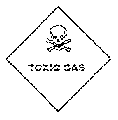 |
| A substance which has a critical temperature below 50°C or which at 50°C has a vapour pressure of more than 3 bar absolute and which is flammable. | Flammable gas. | 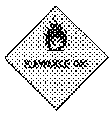 |
A liquid with a flash point of 55°C or below except—
(a) a liquid which—
(i) has a flash point equal to or more than 21°C and less than or equal to WC, and
(ii) when tested at 55°C in the manner specified in Schedule 2 to the Highly Flammable Liquids and Liquefied Petroleum Gases Regulations (Northern Ireland) 1975(a) does not support combustion; or
(b) a viscous preparation which complies with the conditions specified in Part 111 of Schedule 2 to the Classification. Packaging and Labelling of Dangerous Substances Regulations (Northern Ireland) 1985(b)
| Flammable liquid. |  |
| A solid which is readily combustible under conditions encountered in carriage or which may cause or contribute to fire through friction. | Flammable solid. | 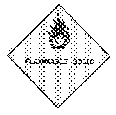 |
| A substance which is liable to spontaneous heating under conditions encountered in carriage or heating in contact with air being then liable to catch fire. | Spontaneously combustible substance. | 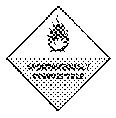 |
| A substance which in contact with water is liable to become spontaneously combustible or to give off a flammable gas. | Substance which in contact with water emits flammable gas. | 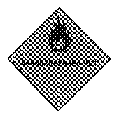 |
| A substance, other than an organic peroxide, which, although not itself necessarily combustible, may by yielding oxygen or by a similar process cause or contribute to the combustion of other material. | Oxidising substance. | 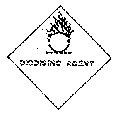 |
A substance which is—
(a) an organic peroxide; and
(b) an unstable substance which may undergo exothermic self-accelerating decomposition.
| Organic peroxide. | 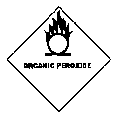 |
| A substance known to be so toxic to man as to afford a hazard to health during carriage or which, in the absence of adequate data on human toxicity, is presumed to be toxic to man. | Toxic substance. | 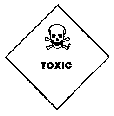 |
| A substance known to be toxic to man or, in the absence of adequate data on human toxicity, is presumed to be toxic to man but which is unlikely to afford a serious acute hazard to health during carriage. | Harmful substance. | 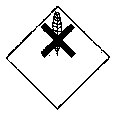 |
A substance which by chemical action will—
(a) cause severe damage when in contact with living tissue; or
(b) materially damage other freight or equipment if leakage occurs.
| Corrosive substance. | 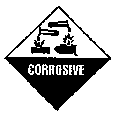 |
A substance which although not having any of the characteristic properties set out above may nevertheless create a risk to the health or safety of any person in the conditions encountered in carriage by reason—
(a) of its chemical properties and its presence in Part 1A of the approved list;
(b) that it is carried at a temperature of above 100°C; or
(c) that it is carried at a temperature above its flash point.
| Other dangerous substance. |  |